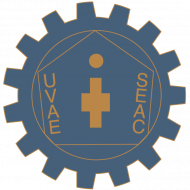
Official Declaration of Asian Heritage Month
Diversity represents one of Canada’s greatest strengths, and we strive to ensure that all Canadians have the opportunity to reach their full potential and participate in Canada’s civic life.
Over the last two centuries, immigrants have journeyed to Canada from East Asia, Southern Asia, Western and Southeast Asia, bringing our society a rich cultural heritage representing many languages, ethnicities and religious traditions.
The people of this diverse, vibrant and growing community have contributed to every aspect of life in Canada — from the arts and science to sport, business, and government.
Asian Heritage Month offers all Canadians an opportunity to learn more about the history of Asian Canadians and to celebrate their contributions to the growth and prosperity of Canada.
Thereby, we declare May as Asian Heritage Month in Canada. (https://www.canada.ca/en/canadian-heritage/campaigns/asian-heritage-month/about.html )
Asian Heritage Month has been celebrated across Canada since the 1990s. In December 2001, the Senate of Canada adopted a motion proposed by Senator Vivienne Poy to officially designate May as Asian Heritage Month in Canada and in May 2002 the Government of Canada signed the official declaration to designate May as Asian Heritage Month.
Did you know that Asian Canadians have origins from China; Philippines; Japan; Korea; South Asia and Vietnam. Since the late 1700’s they have made important contributions to Canadian heritage and identity.
As this article was being written, it was disheartening to read about the recent events in the USA about the killing of Asian Americans and it saddens me that even today immigrants to the America’s are facing such atrocities.
With so much negativity in the news let us celebrate a bit differently this time . Let us not speak about the history or the struggles; let us speak about those Canadian with an Asian background who have given so much to Canada in return for what Canada has given them. A new home, an enriched life, and a future that may not have been possible for them in their homeland.
Alfred Sung – Alfred Sung is born in 1948 in Shanghai, China, he grew up in Hong Kong. He dedicated his life to creating new fashions, apparel, fragrances, accessories and home fashions for women and men. In 1972 he decided to move to Canada. In 1985, Sung co-founded Club Monaco, a high-end casual clothing retailer, with Saul and Joseph Mimran.
When Baltej Singh Dhillon was accepted into the RCMP, he had to find a way to merge his sense of duty to Canada and religion. Service in the RCMP required a clean-shaven face and the wearing of the forces historic uniform, including the issued headgear. As a Sikh, Dhillon’s religious obligation required a beard and wearing a turban. He chose to fight for his religious rights and sparked a debate across the country. The federal government removed the ban on turbans on March 15, 1990. Dhillon graduated from RCMP and he went on to a long care
Sudarshan Gautam was born in the Ramechhap district in Nepal. He was the first individual without arms to climb Mount Everest without the use of prosthetics. As a result of an accident during his childhood, Gautam had to have both of his arms amputated.. He immigrated to Canada in 2007. In 2014, he was inducted into the Canadian Disability Hall of Fame. In May 2017, he received the South Asian Canadian Trailblazers Award.
Deepa Mehta is a prominent and respected filmmaker whose work is known worldwide for its honesty, beauty, and universality. Mehta is the recipient of the 2012 Governor General’s Performing Arts Award for lifetime artistic achievement.
At Vimy Ridge in April 1917, Masumi Mitsui, a Canadian soldier of Japanese origin, earned the Military Medal for bravery. After the war, he returned to British Columbia and helped to establish a Japanese Canadian war memorial in Stanley Park. He was a member of the contingent that lobbied the British Columbian legislature to give Canadians of Japanese origin the right to vote. After the war, Mitsui participated in the lobbying for a public apology and compensation. He died in 1987 at the age of 99. He was the last surviving Canadian veteran of Japanese origin of the First World War—a year before the government made its apology.
Senator Vivienne Poy, the first Canadian of Asian origin appointed to the Senate of Canada. She was integral to establishing May as Asian Heritage Month in Canada. Poy was educated in Hong Kong, England, and Canada, in addition, she earned a PhD in history from the University of Toronto. Poy was appointed to the Senate in 1998, and in 2001 proposed a motion to designate May as Asian Heritage Month. In May 2002, the Government of Canada declared the celebratory month in a formal ceremony.
(https://www.canada.ca/en/canadian-heritage/campaigns/asian-heritage-month/noteworthy-figures.html)
The Canadian Encyclopedia has a very informative article on significant events about Asian Heritage in Canada. Take a moment check it out as it speaks about the struggles endured by the first generation of Asian immigrants in Canada . Watch the video The Secret Life of Canada – Shout Out to Private Buckam Singh – one of the first Sikh Canadian soldier who served in WWI.
A very short list of the many accomplished Asians who have made Canada their home, and are proud Canadians who have left a legacy behind for us to appreciate and continue to honour.
Human Rights Committee
Image: rcinet.ca
